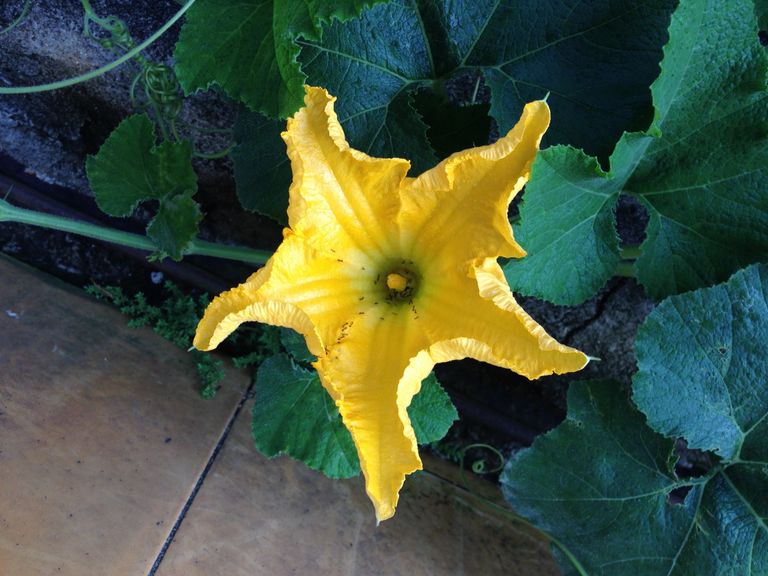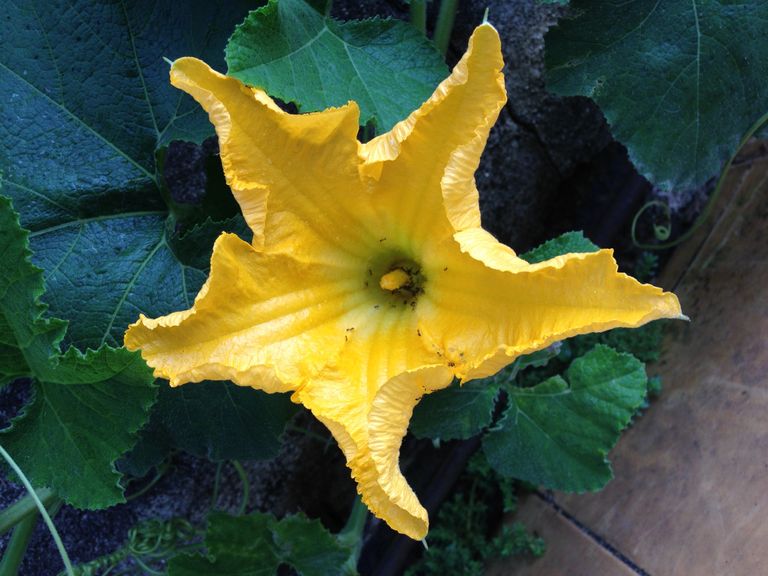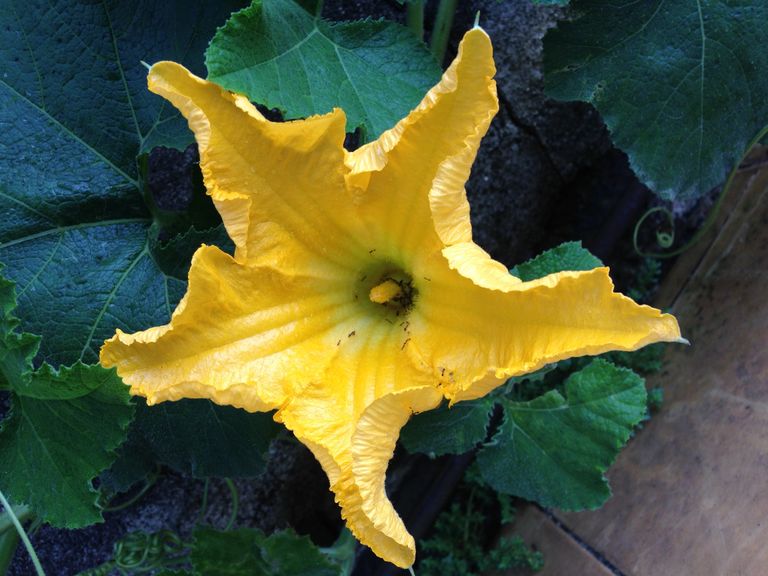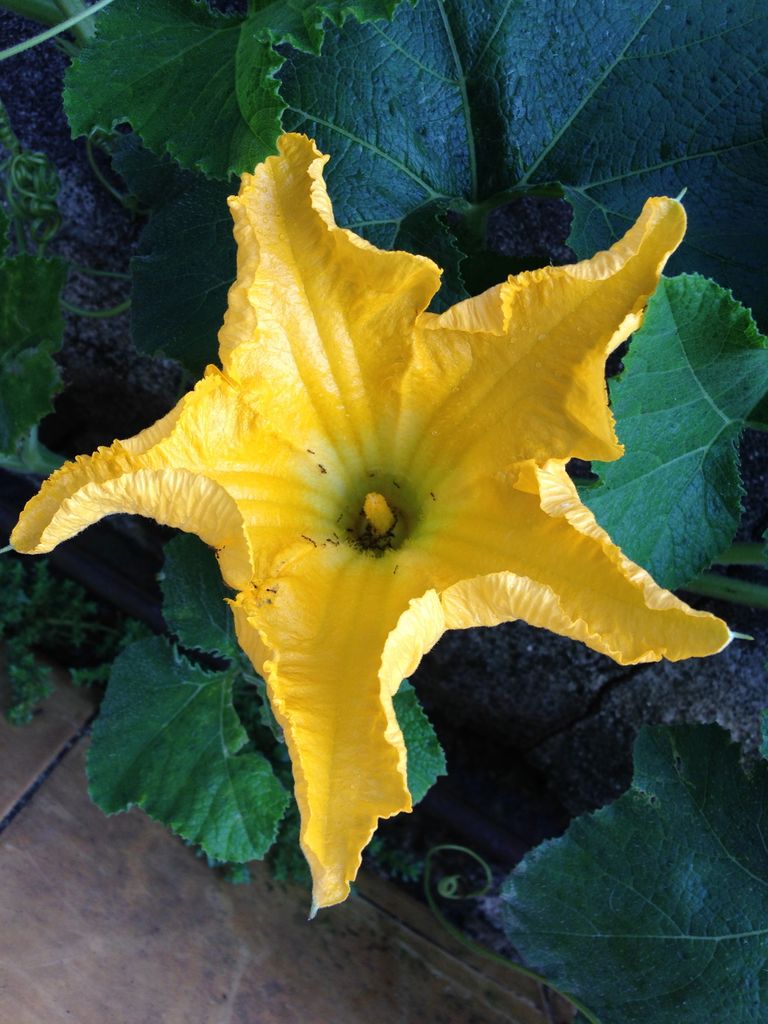Hello Blurtters,
Today I’m going to share you some photos of beautiful flowers of pumpkin plant that I took using iPhone 5. Hope you like it.
Cheers,
Larasbpn
As one of the most popular crops in the United States, in 2017 over 680 million kilograms (1.5 billion pounds) of pumpkins were produced. The top pumpkin-producing states include Illinois, Indiana, Ohio, Pennsylvania, and California.
According to the Illinois Department of Agriculture, 95% of the U.S. crop intended for processing is grown in Illinois. And 41% of the overall pumpkin crop for all uses originates in the state, more than five times the nearest competitor (California, whose pumpkin industry is centered in the San Joaquin Valley), and the majority of that comes from five counties in the central part of the state. Nestle, operating under the brand name Libby's, produces 85% of the processed pumpkin in the United States, at their plant in Morton, Illinois. In the fall of 2009, rain in Illinois devastated the Nestle crop, which combined with a relatively weak 2008 crop depleting that year's reserves resulted in a shortage affecting the entire country during the Thanksgiving holiday season. Another shortage, somewhat less severe, affected the 2015 crop. The pumpkin crop grown in the western United States, which constitutes approximately 3-4% of the national crop, is primarily for the organic market. Terry County, Texas, has a substantial pumpkin industry, centered largely on miniature pumpkins.
Pumpkins are a warm-weather crop that is usually planted in early July. The specific conditions necessary for growing pumpkins require that soil temperatures 8 centimetres (3 in) deep are at least 15.5 °C (60 °F) and that the soil holds water well. Pumpkin crops may suffer if there is a lack of water or because of cold temperatures (in this case, below 18 °C or 65 °F). Soil that is sandy with poor water retention or poorly drained soils that become waterlogged after heavy rain are both detrimental. Pumpkins are, however, rather hardy, and even if many leaves and portions of the vine are removed or damaged, the plant can quickly grow secondary vines to replace what was removed.
Pumpkins produce both a male and female flower, with fertilization usually performed by bees. In America, pumpkins have historically been pollinated by the native squash bee, Peponapis pruinosa, but that bee has declined, probably partly due to pesticide (imidacloprid) sensitivity. Ground-based bees, such as squash bees and the eastern bumblebee, are better suited to manage the larger pollen particles that pumpkins create, but today most commercial plantings are pollinated by hives of honeybees, which also allows the production and sale of honey that the bees produce from the pumpkin pollen. One hive per acre (0.4 hectares, or 5 hives per 2 hectares) is recommended by the U.S. Department of Agriculture. If there are inadequate bees for pollination, gardeners may have to hand pollinate. Inadequately pollinated pumpkins usually start growing but fail to develop.
source





** Your post has been upvoted (8.24 %) **
Curation Trail is Open!
Join Trail Here
Delegate more BP for bigger Upvote + Daily BLURT 😉
Delegate BP Here
Upvote
https://blurtblock.herokuapp.com/blurt/upvote
Thank you 🙂 @tomoyan